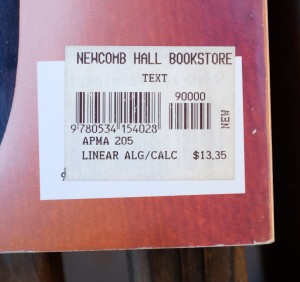I came to Silicon Valley in the mid 1990’s. Reflecting back on that time directly out of college, I remember that I thought computer chips were exciting and that the best companies designing and manufacturing them were making huge money. Of course, I had been fascinated with computers since I was little, as had many of my coworkers.
Anyway, computer chips seemed really cool back then. They looked cool. They were made in cool manufacturing environments. The tools to design them were cool. And the chips were getting better and faster all the time. Honestly, it just seemed like fun and I wanted in.
In those years, I distinctly remember social events where I would try to express my excitement about semiconductors and folks would just politely back away from me, the crazy nerd.
Today, Silicon Valley is still cool. In fact, it’s way cooler and more widely cool. People are making even more money, more people are involved, and the products they’re churning out are used by more people and in more numerous ways. And, the only reason you can’t talk about your work at parties today is because everyone is so tired of it.
But, SV today leaves me cold.
What has changed is cool itself. I liked nerd-cool, but this is mainstream capitalist cool. Banker cool. “Kids” in hoodies cool. Ignore the rules cool.
The people being drawn to Silicon Valley today, like me, are also coming because it’s exciting, but what excites them is not the same as what excited me. For awhile I thought this was a software vs. hardware thing. (It is, but not entirely — requires a separate post for sure.)
I see two basic factors for my loss of affection for SV:
- Today’s hot companies generally deploy tech rather than make it. The exceptions seem to be when they have to develop something for operational purposes, and when they do they seem to keep their innovations close. Poster child for this might be Google, which had to invent a lot of its infrastructure, though a Google starting fresh today would probably have much less to do. Anyway, not creating things you don’t absolutely have to create is probably smart, but can we admit that it’s also boring?
- The business models make me uncomfortable. Making a thing (or software, or a service) and selling it in a two-party, pareto-improving transaction is very passé. In fact, if your plan is to make and sell hardware OR software, your prospects for raising money are limited. Instead, advertising and market-making are hot.
When I was a young man, choosing my major in college, there were large, successful advertising businesses and large, successful market makers. But I would never have spent a femtosecond considering working for either.
Today, advertisers (Google, Facebook, etc) and market-makers (Uber, Airbnb, etc) dominate Silicon Valley. They’re great companies, I guess, but I have to wonder why so many engineers are thrilled to join them. Steve Jobs once famously recruited John Sculley by asking him if he wanted to sell sugar water for the rest of his career, or if he wanted to change the world. Well, it seems that sugar water (or perhaps, sugar water once removed) may have actually won in the end. (Interestingly, Apple continues to mostly avoid this model.)
I still love tech. Maybe the tech nerds will regroup somewhere and stage a comeback. Probably not going to happen in SV, though.

